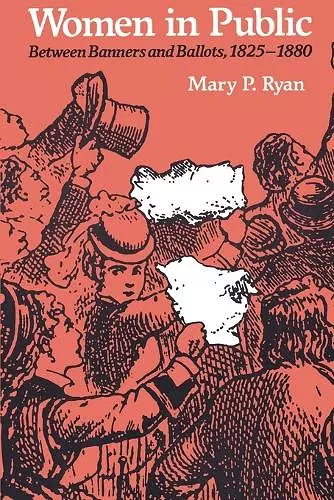Women in Public
Between Banners and Ballots, 1825-1880
Format:Paperback
Publisher:Johns Hopkins University Press
Published:1st Feb '92
Currently unavailable, and unfortunately no date known when it will be back

On May 15, 1862, U.S. General Benjamin Butler, commander of occupied New Orleans, ordered that any woman who publicly insulted Union soldiers be subject to prosecution as a prostitute. Not all nineteenth-century women, Butler learned, felt their place was in the home. As his order implies, women were governed by an unwritten code of public conduct, appeared on public streets, spoke out on public issues, and were subjects of public policy. In "Women in Public" noted historian Mary P. Ryan examines each of these issues as it affected women in New York, New Orleans, and San Francisco. Contrary to current perceptions, Ryan contends, nineteenth-century women appeared in public in a variety of roles. They took part in civic ceremonies, from Independence Day celebrations to ethnic festivals. Whether they sonsorted in parks designed for "ladies" or in the increasingly regulated haunts of prostitutes, their place in the everyday life of the streets became more segregated and distinct. Denied access to the voting booth, they practiced "outdoor politics," waving handkerchiefs at rallies--and wielding brickbats in riots. Exploring little-noted aspects of nineteenth-century political discourse, Ryan shows how gender and sexual imagery in public language changed as the century progressed. She analyzes the construction of boundaries between private and public spheres and examines the American political system's failure to accommodate difference within democratic order.
An immensely ambitious, complicated and pioneering study that is sure to have a major impact on historians... [The] book is a series of essays that trace the representation of gender, as well as women's actual participation in public life. Women's Review of Books Ryan's elegant essays sketch a chronology of changing gender symbology and contribute to our understanding of the cultural construction of boundaries between public and private. Historians and feminists will pursue for some time her questions about the process and consequences of excluding women from the public arena and their striving for participation in it. -- Lee Chambers-Schiller American Historical Review
ISBN: 9780801844010
Dimensions: unknown
Weight: 363g
208 pages